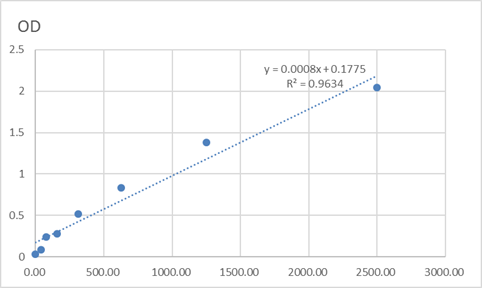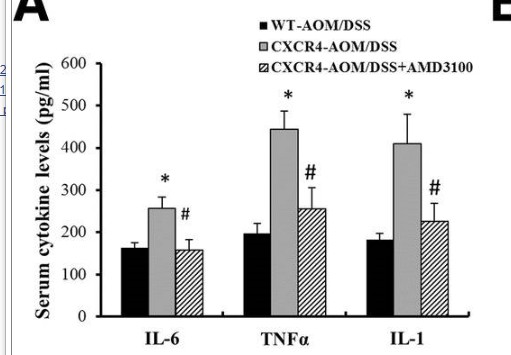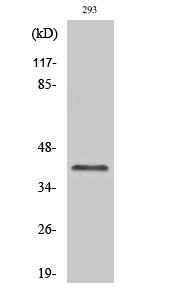Cleaved-Factor XII HC (R372) Cell-Based Colorimetric ELISA Kit
- Catalog No.:KA3947C
- Applications:ELISA
- Reactivity:Human
- Gene Name:
- F12
- Human Gene Id:
- 2161
- Human Swiss Prot No:
- P00748
- Mouse Swiss Prot No:
- Q80YC5
- Storage Stability:
- 2-8°C/6 months
- Other Name:
- Coagulation factor XII (EC 3.4.21.38) (Hageman factor) (HAF) [Cleaved into: Coagulation factor XIIa heavy chain;Beta-factor XIIa part 1;Beta-factor XIIa part 2;Coagulation factor XIIa light chain]
- Detection Method:
- Colorimetric
- Background:
- catalytic activity:Selective cleavage of Arg-|-Ile bonds in factor VII to form factor VIIa and factor XI to form factor XIa.,disease:Defects in F12 are the cause of factor XII deficiency (FA12D) [MIM:234000]; also known as Hageman factor deficiency. This trait is an asymptomatic anomaly of in vitro blood coagulation. Its diagnosis is based on finding a low plasma activity of the factor in coagulating assays. It is usually only accidentally discovered through pre-operative blood tests. F12 deficiency is divided into two categories, a cross-reacting material (CRM)-negative group (negative F12 antigen detection) and a CRM-positive group (positive F12 antigen detection).,disease:Defects in F12 are the cause of hereditary angioedema type 3 (HAE3) [MIM:610618]; also known as estrogen-related HAE or hereditary angioneurotic edema with normal C1 inhibitor concentration and function. HAE is characterized by episodic local subcutaneous edema, and submucosal edema involving the upper respiratory and gastrointestinal tracts. HAE3 occurs exclusively in women and is precipitated or worsened by high estrogen levels (e.g., during pregnancy or treatment with oral contraceptives). It differs from HAE types 1 and 2 in that both concentration and function of C1 inhibitor are normal.,function:Factor XII is a serum glycoprotein that participates in the initiation of blood coagulation, fibrinolysis, and the generation of bradykinin and angiotensin. Prekallikrein is cleaved by factor XII to form kallikrein, which then cleaves factor XII first to alpha-factor XIIa and then to beta-factor XIIa. Alpha-factor XIIa activates factor XI to factor XIa.,online information:F12 mutation db,online information:Factor XII entry,PTM:O- and N-glycosylated. The O-linked polysaccharides were not identified, but are probably the mucin type linked to GalNAc.,similarity:Belongs to the peptidase S1 family.,similarity:Contains 1 fibronectin type-I domain.,similarity:Contains 1 fibronectin type-II domain.,similarity:Contains 1 kringle domain.,similarity:Contains 1 peptidase S1 domain.,similarity:Contains 2 EGF-like domains.,
- Function:
- kinin cascade, plasma kallikrein-kinin cascade, acute inflammatory response, Factor XII activation, regulation of acute inflammatory response, proteolysis, defense response, inflammatory response, immune response, blood coagulation,blood coagulation, intrinsic pathway, hemostasis, response to wounding, response to organic substance, positive regulation of macromolecule metabolic process, regulation of plasminogen activation, positive regulation of plasminogen activation, regulation of protein maturation by peptide bond cleavage, positive regulation of protein maturation by peptide bond cleavage, protein processing, protein autoprocessing, regulation of proteolysis, regulation of blood coagulation, positive regulation of blood coagulation, negative regulation of blood coagulation, zymogen activation, regulation of response to external stimulus, regulation of cellular protein metabolic pro
- Subcellular Location:
- Secreted.
- June 19-2018
- WESTERN IMMUNOBLOTTING PROTOCOL
- June 19-2018
- IMMUNOHISTOCHEMISTRY-PARAFFIN PROTOCOL
- June 19-2018
- IMMUNOFLUORESCENCE PROTOCOL
- September 08-2020
- FLOW-CYTOMEYRT-PROTOCOL
- May 20-2022
- Cell-Based ELISA│解您多样本WB检测之困扰
- July 13-2018
- CELL-BASED-ELISA-PROTOCOL-FOR-ACETYL-PROTEIN
- July 13-2018
- CELL-BASED-ELISA-PROTOCOL-FOR-PHOSPHO-PROTEIN
- July 13-2018
- Antibody-FAQs



